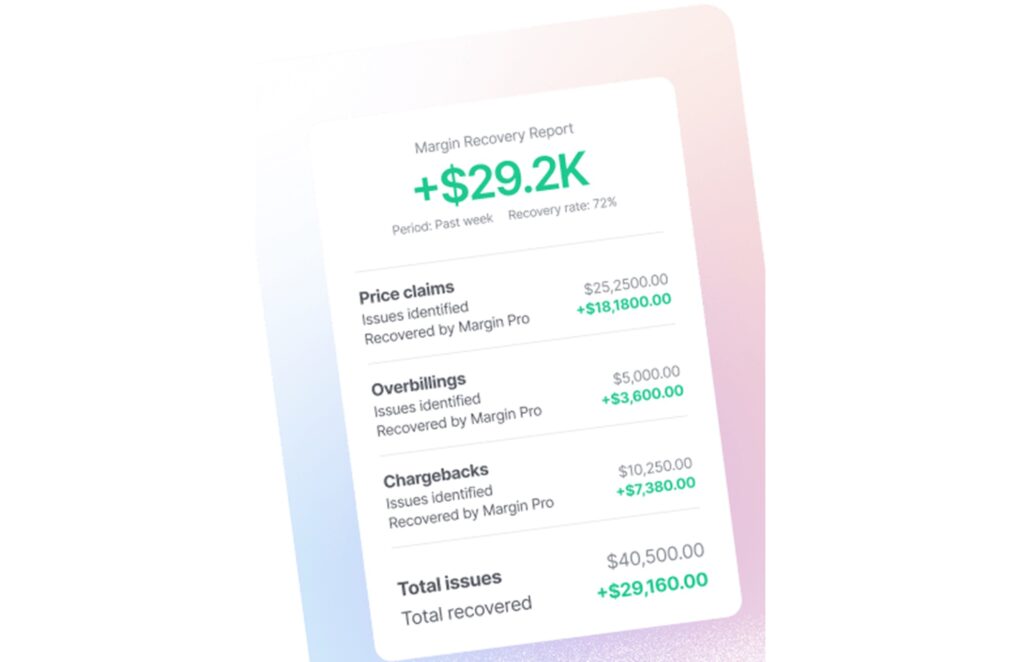- Blog
-
For Sellers
GTIN exemption: How to list products on Amazon without a UPC or GTIN
Amazon says you need a barcode. Turns out, you might not. Here’s how to list your products without a GTIN, legally and stress-free.

Ever tried to list a product on Amazon only to hit a frustrating roadblock when asked for a UPC code? For many sellers—especially those with handmade, private label, or bundled products—this requirement can feel like an unnecessary hurdle and expense.
The good news? Amazon offers a way around this requirement. Qualified sellers can list products without universal product codes. This saves them hundreds in upfront costs and streamlines the path to market.
In this comprehensive guide, we’ll walk you through exactly which products qualify for exemption. Then we’ll talk about how to apply successfully and the step-by-step process for listing exempt products. Whether you’re a new seller testing the waters or an established brand with specialty products, you’ll learn how to navigate Amazon’s product identification system with confidence.
Don’t feel like reading? Listen to this article in our podcast, Commerce Decoded.
Product identifiers used on Amazon
Product identifiers are the backbone of Amazon’s catalog system, helping the platform track inventory, match listings, and manage fulfillment. There are two main types: global identifiers recognized worldwide and Amazon-specific codes used only within the marketplace.
Understanding which identifiers you need (and when you can skip them) can save you significant time and money. Let’s break down the most common codes you’ll encounter as an Amazon seller.
Global identifiers
Global identifiers are standardized codes recognized across international retail channels and supply chains. These are typically what Amazon requests when you first create a listing.
First thing you need to know about is the Global Trade Item Number (GTIN). The GTIN is a globally unique identifier used to distinguish trade items (products or services) at any point in the supply chain. They’re defined by GS1, the global authority on barcode standards, and are used in retail, logistics, and online commerce.
Basically, a GTIN serves as a common language between trading partners to identify products uniquely and exchange accurate data. It can be encoded into barcodes (UPC, EAN, ITF-14) or EPC/RFID tags to facilitate scanning at points of sale, warehouses, and digital platforms.
GTINs are structured into various formats:
- GTIN-12 (UPC): 12 digits – common in the U.S.
- GTIN-13 (EAN): 13 digits – standard outside North America
- GTIN-8: 8 digits – used for small items like gum
- GTIN-14: 14 digits – used for cases, pallets, or multi-packs
Specifically, here are the numbers and codes you’re most likely going to see in the wild:
- UPC (Universal Product Code) contains 12 digits and can be found beneath the barcode on most retail products worldwide.
- EAN (European Article Number) contains 13 digits and functions similarly to UPCs but is more prevalent outside North America. It includes country-specific prefixes that identify product origin.
- ISBN (International Standard Book Number) is used exclusively for books and may contain either 10 or 13 digits. This code links directly to a specific book edition, publisher, and publication data.
These global identifiers must be obtained through GS1. Amazon cross-verifies all GTINs against the GS1 database to ensure authenticity, and using fake codes can lead to account penalties.
The cost of obtaining legitimate GTINs from GS1 ranges from $30 for a single code to $250+ for a company prefix license that allows you to create multiple codes.
Amazon-specific identifiers
Besides global standards, Amazon uses its own unique identifiers to manage products within its ecosystem.
- ASIN (Amazon Standard Identification Number) is a 10-character alphanumeric code automatically assigned to every product in Amazon’s catalog. This becomes your product’s unique identifier within the Amazon marketplace.
- FNSKU (Fulfillment Network Stock Keeping Unit) is used exclusively by FBA sellers. This code links specific inventory to your seller account in Amazon’s warehouse system and is printed as a label on each product’s packaging.
- SKU (Stock Keeping Unit) is a custom inventory tracking code created by you, the seller. Unlike the other identifiers, SKUs aren’t standardized. You define your own format to help organize your inventory and track variations.
For most Amazon categories, you’ll need to provide a global identifier like a UPC when creating a new listing. However, the GTIN exemption process allows qualified sellers to bypass this requirement in specific situations.
Products eligible for GTIN exemption
Not all products qualify for GTIN exemption, but Amazon has carved out exceptions for several key categories. Understanding these eligibility criteria is crucial before you begin the application process.
Private label products often qualify for GTIN exemption, especially when you own the brand. Your product must not already have a GS1-registered barcode, and you’ll need to provide images showing the branded packaging without existing barcodes.
Handmade items almost always qualify for exemption. This includes jewelry, pottery, home décor, and other artisanal crafts that are typically created in small batches without commercial barcodes. Amazon recognizes that requiring GTINs for these unique items would create an unnecessary burden for craftspeople.
Parts and accessories frequently receive exemptions, particularly automotive components, mobile accessories, and replacement parts. These items often don’t come with manufacturer-assigned GTINs, so they’re good candidates for exemption.
Bundled products combining multiple items that aren’t factory-packaged together can also receive exemptions. For example, a custom gift set containing complementary items from different brands would qualify since the bundle itself wouldn’t have its own manufacturer-assigned GTIN.
Generic products without distinct brand names can also be exempt. In this case, you’ll list “generic” as the brand name during the application process and provide photos showing no trademarked branding on the product.
For any of these categories, you’ll need to provide clear photographic evidence that your product lacks a commercial barcode. Once approved for a specific brand and category combination, you can list multiple products under that approval without reapplying for each item.
Benefits and drawbacks of listing without a GTIN
The GTIN exemption process offers both advantages and disadvantages that every seller should carefully weigh before proceeding. Understanding these tradeoffs will help you make a strategic decision about whether to pursue exemption or invest in legitimate GTINs.
Advantages
- Cost savings represent the most immediate benefit of GTIN exemption. Obtaining legitimate GTINs from GS1 costs $30 for a single code or $250+ for a company prefix license. For sellers testing new products or operating on tight margins, avoiding this expense can make a significant difference.
- Flexibility for custom products is another advantage. If you sell handmade items, private-label goods, or unique bundles, GTIN exemption lets you bypass global barcode requirements that weren’t designed with these product types in mind.
- Faster time-to-market rounds out the benefits. Once approved for exemption, you can list products immediately without waiting to obtain or verify GTINs. This can be particularly valuable when responding to seasonal trends or short-term opportunities.
Disadvantages
- Potential reduced visibility is the most significant drawback. Products with GTINs are more likely to be properly indexed in Amazon’s catalog and matched to existing listings, potentially improving discoverability. GTIN-exempt listings can’t be matched to other ASINs unless an exact match is found via product title or attributes.
- Trust challenges may arise with GTIN-exempt listings, especially those listed under “generic” brand names. Some customers may be skeptical of products without recognized branding or barcodes, particularly in categories like electronics or health products where authenticity matters.
- Brand building limitations are the final major drawback. Without GS1-verified barcodes, you can’t access full Amazon Brand Registry benefits, which include A+ Content, Brand Analytics, and the Vine Program. This may hamper long-term brand development and expansion to other retail channels that require GTINs.
When to get a GTIN vs. when to seek exemption
If you’re building a long-term brand with plans to expand beyond Amazon, investing in legitimate GTINs makes sense. The same applies if you can afford GS1 registration fees or sell standard retail items that customers expect to have barcodes.
On the other hand, GTIN exemption is ideal when minimizing upfront costs, selling custom or handmade goods, or operating exclusively on Amazon with no immediate plans for expansion. It’s also perfect for testing product ideas before committing to larger investments.
Ultimately, your decision should align with your business goals, budget constraints, and product type. GTIN exemption works best as a strategic choice rather than a default approach for every listing.
A step-by-step guide to applying for GTIN exemption
Successfully navigating Amazon’s GTIN exemption process requires careful preparation and attention to detail. The platform has specific requirements that must be met to receive approval. Let’s break down the process.
Prepare the requirements
Before starting your application, gather all necessary materials to meet Amazon’s verification standards. This preparation will streamline the process and increase your chances of first-time approval.
You won’t need formal legal documents, but you should have your product name, category, and brand name ready. The brand name must exactly match what appears on the product or packaging (or use “generic” if unbranded).
Product images are crucial for your application. You’ll need to upload 2-9 real-world photographs (not digital renders) showing all visible sides of the product and its packaging. These images must clearly show any branding permanently affixed to the product and demonstrate that no GS1 barcode is present.
If you’re not the brand owner but are selling branded items without GTINs, you’ll need a manufacturer letter. This document must confirm that no GTIN is provided for the product and include the manufacturer’s permission for you to list without one. The letter should be on company letterhead with contact information. However, if you’re selling your own brand or private label products, you can bypass this requirement.
Submit your application in Seller Central
- Log in to your Seller Central account and navigate to the “Apply for a GTIN exemption” page.
- On the GTIN exemption page:
- Click “Select” to choose the appropriate product category from the list.
- Enter the brand or publisher name exactly as it appears on the product. If the product is unbranded or a bundle, enter “Generic” (note: it is case-sensitive).
- To apply for multiple brands or categories, use the “+ Add more brands/publishers” or “+ Add more categories” options.
- Click “Check for eligibility”.
- If eligible, a check mark will appear in the Status column.
- If the product is not eligible, the process cannot proceed for that item.
- If eligible, click “Continue to submit proof.”
- You’ll be taken to the Provide Proof page.
- Upload actual photographs of each product and its packaging, showing all visible sides, any branding clearly affixed, and confirming that no barcodes (e.g., UPCs or EANs) are present.
- Input the product name for each item listed.
- Once all items have been added, click “Submit request.”
Amazon typically reviews exemption requests within 48 hours. You’ll receive a confirmation email once a decision is made, or you can track the request status under your case log in Seller Central.
Troubleshooting common errors
Even well-prepared applications sometimes encounter issues. Understanding common error codes can help you quickly resolve problems and continue with your listing process.
The “5665 error” occurs when trying to list a product under a brand that hasn’t been approved by Amazon. To resolve this, either register the brand or select “Generic” as the brand name if no branding is present. If using your own brand, submit a brand approval request before applying for exemption.
The “5461 error” indicates that the product you’re trying to list already exists in Amazon’s catalog. First, search for the product by keywords or attributes. If found, add your offer to the existing ASIN rather than creating a new listing. If it’s genuinely a different item, provide strong proof with unique imagery and detailed product descriptions.
Other common issues include image rejections (usually due to digital renders or visible barcodes), application processing delays (often caused by brand name mismatches), and form field limitations (typically for ineligible categories). In most cases, careful attention to Amazon’s guidelines and exact matching of product details will prevent these problems.
How to list GTIN-exempt products
Once your GTIN exemption is approved, you can begin listing products without UPCs, EANs, or ISBNs—but only within the specific brand and category combination you received approval for. The listing process is similar to standard product creation with just a few differences.
To create your first listing, go to Seller Central. Make sure that it’s been 30 minutes since you’ve received confirmation of your item’s GTIN exemption. Then, select “Catalog” and then “Add Products. In the blank form tab, type in your product’s details.
Enter the exact brand name as your GTIN exemption approval. If your exemption is approved, Amazon will either automatically suppress the GTIN field or display a checkbox like ‘I don’t have a product ID.’ This option only appears for listings under approved brand-category combinations.
Click “Next” to complete all required listing details, including product title, condition, price, and fulfillment method. Then hit “Submit” to publish the listing.
Consistency between your exemption approval and listing is critical. You must use the exact category that was approved for GTIN exemption. The brand name must match exactly, including case sensitivity and spacing. If approved under “Generic,” your product listings must also use “Generic.” Deviations will result in blocked listings or GTIN requests.
Product images should also follow Amazon’s standard guidelines while still demonstrating the absence of barcodes. Upload at least two real-world photos showing all sides of the product and its packaging. These should display any branding (if applicable) and clearly show that no GS1 barcode is present.
When selecting your fulfillment option, remember that FBA requires FNSKU barcodes, which Amazon will generate for you. These must be applied to each product before shipping to Amazon’s fulfillment centers. For merchant fulfillment (FBM), no additional barcodes are needed as you’ll handle your own shipping and inventory management.
How to get FNSKUs for GTIN-exempt products
If you choose Fulfillment by Amazon for your GTIN-exempt products, each unit will need an FNSKU barcode. This unique identifier ensures Amazon can track your inventory through their fulfillment centers and attribute sales correctly to your account.
The process for obtaining FNSKUs is straightforward. After listing your GTIN-exempt product, go to “Inventory” then “Manage FBA Inventory” in Seller Central. Locate your product and select “Print Item Labels” from the dropdown menu. Amazon will automatically generate your FNSKU barcode, which you can download and print using label sheets or thermal printers.
Each label must be applied following Amazon’s labeling requirements. Place the FNSKU on a flat, visible surface of the product or packaging. Make sure it covers any existing barcodes (if present). The label should be scannable and securely affixed to prevent it from falling off during transit or warehouse handling.
Common FNSKU mistakes include:
- using manufacturer barcodes instead of Amazon’s FNSKU
- printing blurry or unscannable labels
- placing labels over curved surfaces or seams
- forgetting to label items when required
- using the wrong FNSKU for product variations.
These errors can lead to inventory delays, returns, or misrouted items in Amazon’s fulfillment network.
For multi-pack or bundled products, each bundle gets a single FNSKU (not each component). Make sure the label is visible without opening the packaging, and consider using poly bags with suffocation warnings if your products don’t have retail packaging.
By following Amazon’s FNSKU requirements exactly, you’ll ensure smooth processing of your inventory and avoid potential delays or additional fees.
Alternatives if you’re not eligible for GTIN exemption
If your product doesn’t qualify for GTIN exemption or your application is rejected, you still have several options for listing on Amazon.
First off, you can get legitimate GTINs from GS1. Purchase directly from GS1.org or GS1 US to ensure your codes are properly registered and verified by Amazon. Avoid third-party resellers, as Amazon verifies GTIN ownership against GS1’s database.
Using existing product listings is another viable option if your product matches an item already in Amazon’s catalog. Search for the product by title or ASIN, click “Sell this product,” and enter your offer details. This approach only works when selling the exact same product (identical specifications and branding) as an existing listing.
If neither of these options works for your situation, consider reconsidering your product strategy. You might adapt your business model to focus on handmade or generic products that more easily qualify for exemption. Alternatively, explore bundling or creating a private label to qualify for future exemptions while you build toward Brand Registry eligibility.
Each alternative has its own advantages and challenges, so evaluate which approach best aligns with your long-term business goals, product lineup, and budget constraints.
Final thoughts
Navigating Amazon’s product identification requirements doesn’t have to be complicated or expensive. The GTIN exemption process offers a legitimate pathway for qualified sellers to list products without purchasing UPCs or other global identifiers.
For new sellers testing the market, artisans creating handmade goods, or businesses with unique bundles and private label products, GTIN exemption can save hundreds in upfront costs while accelerating your path to market. You just need to understand which products qualify, prepare thorough documentation, and follow Amazon’s application process precisely.
It doesn’t end there, though. After listing your products, you still need reliable tools to manage your operations. That’s where Seller 365 enters the picture.
Get a comprehensive suite of 10 tools designed to help you source profitable products, manage inventory, optimize pricing, and track profits—all in one subscription. Try Seller 365 free for up to 14 days and discover how the right tools can transform your Amazon business.
FAQs about GTIN exemption
You can verify your GTIN exemption status by checking your case log in Seller Central. After approval, you’ll receive an email confirmation specifying the brand name and product category approved for exemption.
GTIN is mandatory for most product categories on Amazon unless you’ve been granted a specific exemption. Amazon requires GTINs (like UPCs, EANs, or ISBNs) to help maintain catalog accuracy and match products across sellers. However, exemptions are available for private label products, handmade items, parts and accessories, bundles, and generic products that meet Amazon’s eligibility criteria.
No, you cannot substitute your internal SKU for a GTIN on Amazon. SKUs are seller-specific identifiers used for your own inventory management, while GTINs are global standards used across retailers. Amazon requires either a valid GTIN or an approved GTIN exemption. If you have an exemption, you’ll still create a SKU for your internal tracking, but Amazon will generate an ASIN for the product in its catalog rather than requiring a GTIN.






















